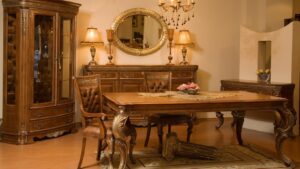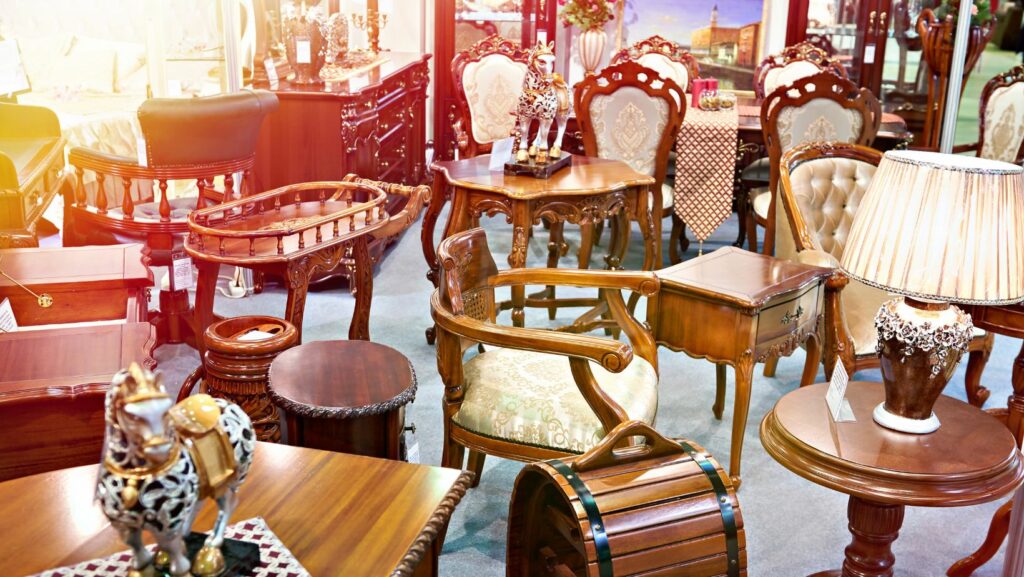Step into the rich tapestry of history with old world furniture, where each piece tells a story of craftsmanship and timeless elegance. This style, rooted in the traditions of European decor, brings a sense of grandeur and classic beauty to any space. From ornate carvings to robust earthy hues, old world furniture encapsulates the essence of a bygone era, making it a perfect choice for those looking to infuse their homes with a touch of historical luxury.
As they explore this fascinating style, enthusiasts find that old world furniture is not just about aesthetics but also about creating a warm, inviting atmosphere. It’s the intricate details and durable materials that make these pieces not only visually appealing but also practical for everyday use. Whether you’re dressing up a formal dining room or adding character to a cozy living room, the charm of old world furniture can transform your living space into a picturesque scene straight out of a European countryside estate.
Old World Furniture
Defining Old World Style
 Old World style encompasses a variety of design elements that evoke the charm and sturdiness of European decor from centuries past. Characterized by its robust and rustic features, Old World style prominently includes materials like dark wood, wrought iron, and textured fabrics. Elements such as heavy draperies, thick rugs, and rich tapestries complement the substantial furniture pieces, creating a warm, enveloping environment. This style integrates large-scale furniture with substantial, ornate detailing that includes scrolled, carved, or tufted elements. Architects and designers might incorporate exposed beams, arched doorways, and stone or wooden floors to complete the look, ensuring each space offers a hearty nod to historical luxury and longevity.
Old World style encompasses a variety of design elements that evoke the charm and sturdiness of European decor from centuries past. Characterized by its robust and rustic features, Old World style prominently includes materials like dark wood, wrought iron, and textured fabrics. Elements such as heavy draperies, thick rugs, and rich tapestries complement the substantial furniture pieces, creating a warm, enveloping environment. This style integrates large-scale furniture with substantial, ornate detailing that includes scrolled, carved, or tufted elements. Architects and designers might incorporate exposed beams, arched doorways, and stone or wooden floors to complete the look, ensuring each space offers a hearty nod to historical luxury and longevity.
Historical Influences on Old World Furniture
Old World furniture draws heavily from the vast history of European art and architecture. Key periods influencing this style include the Renaissance, Baroque, and Gothic eras, each contributing distinct elements to the furniture’s design. For instance, the Renaissance era brought forth the use of symmetry and proportion, evident in the balanced and harmonious designs of Old World furniture. Baroque influence is seen in the ornate carvings and lavish embellishments that add a sense of drama and grandeur to pieces. Gothic styling contributes through pointed arches and intricate detailing, reminiscent of Europe’s grand cathedrals.
These historical elements combine to form furniture that is not only aesthetically appealing but also rich in cultural heritage. Crafted by skilled artisans, Old World furniture typically exhibits hand-carved detailing and robust constructions, using wood like oak, mahogany, and walnut, woods known for their durability and attractive grain. The attention to detail and historical accuracy in these pieces ensures they remain favorites in homes seeking a touch of historical elegance and craftsmanship.
Key Characteristics of Old World Furniture
Materials and Craftsmanship
 Old World furniture stands out due to its use of high-quality, durable materials, primarily woods such as oak, mahogany, and walnut. These hardwoods ensure longevity and bear the weight of the detailed carvings typical in this style. Artisans employ traditional crafting techniques passed down through generations, emphasizing hand-carved details and joint durability. Additionally, the incorporation of wrought iron and leather adds to the robust, antique feel of the furniture, enhancing its functionality and aesthetic appeal.
Old World furniture stands out due to its use of high-quality, durable materials, primarily woods such as oak, mahogany, and walnut. These hardwoods ensure longevity and bear the weight of the detailed carvings typical in this style. Artisans employ traditional crafting techniques passed down through generations, emphasizing hand-carved details and joint durability. Additionally, the incorporation of wrought iron and leather adds to the robust, antique feel of the furniture, enhancing its functionality and aesthetic appeal.
Common Design Elements
The design elements in Old World furniture are deeply influenced by European historical periods, including the Renaissance, Baroque, and Gothic eras. Common features include intricate wood carvings, ornate metalwork, and luxurious fabrics. These pieces frequently showcase opulent details like tufting, gilding, and rich, textured upholstery in deep, earthy tones. Architectural elements like columns and scrolls are also prominent, adding to the stately and elaborate nature of Old World design, creating timeless appeal in any setting.
Comparing Old World Furniture to Modern Designs
Aesthetic Differences
 Old World furniture and modern designs display distinct aesthetic differences, driven mainly by their origins and historical contexts. Old World style emanates a sense of history and opulence with its dark tones and rich textures. These pieces often feature elaborate ornamentation, such as hand-carved details and gilded accents, typical of the Renaissance and Baroque periods. For example, a typical Old World armoire or cabinet boasts intricate wood carvings and detailed inlays, using materials like oak, mahogany, and walnut.
Old World furniture and modern designs display distinct aesthetic differences, driven mainly by their origins and historical contexts. Old World style emanates a sense of history and opulence with its dark tones and rich textures. These pieces often feature elaborate ornamentation, such as hand-carved details and gilded accents, typical of the Renaissance and Baroque periods. For example, a typical Old World armoire or cabinet boasts intricate wood carvings and detailed inlays, using materials like oak, mahogany, and walnut.
In contrast, modern furniture emphasizes simplicity and minimalism. It focuses on clean lines, neutral colors, and the use of modern materials like steel, glass, and molded plastic. This style often avoids unnecessary decoration to offer a sleek and uncluttered look. For instance, a modern sofa might highlight a streamlined shape with a monochrome color scheme, focusing on functionality without elaborate detailing.

